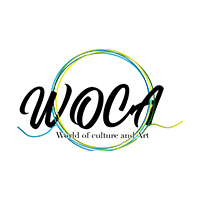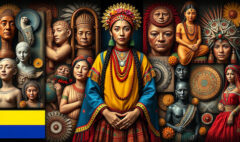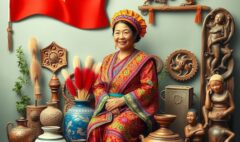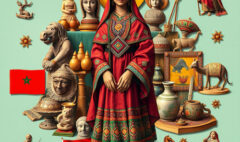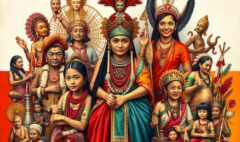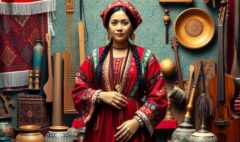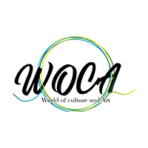The Vibrant World of Australian Indigenous Arts
The Vibrant World of Australian Indigenous Arts
Australian Indigenous arts represent one of the oldest continuous art traditions in the world, spanning over 65,000 years. As an expert in Aboriginal and Torres Strait Islander art forms, I’m thrilled to guide you through this rich tapestry of creativity that continues to captivate audiences worldwide. From ancient rock paintings to contemporary mixed-media works, Australian Indigenous arts offer a profound connection to the land, culture, and Dreamtime stories that form the backbone of Indigenous Australian identity.
The Origins of Australian Indigenous Arts
The roots of Australian Indigenous arts stretch back millennia, with the earliest known rock art dating back at least 28,000 years. These ancient artworks, found in caves and on rock shelters across the continent, provide a glimpse into the spiritual beliefs and daily lives of Australia’s First Peoples. The enduring nature of these artistic traditions speaks to their deep cultural significance and the resilience of Indigenous communities.
Rock Art: Stories Etched in Stone
Rock art is perhaps the most iconic form of Australian Indigenous arts. These paintings and engravings, found in places like Kakadu National Park and the Kimberley region, depict creation stories, hunting scenes, and spiritual beings. The use of ochre, a natural pigment, has allowed many of these artworks to survive for thousands of years, providing an unbroken link to ancient traditions.
Bark Painting: Nature’s Canvas
Bark painting is another significant tradition in Australian Indigenous arts, particularly in Arnhem Land. Artists strip bark from eucalyptus trees and create intricate designs using natural pigments. These paintings often represent Dreamtime stories, clan totems, and important cultural events. The textures and earthy tones of bark paintings make them highly sought after by collectors and art enthusiasts worldwide.
Australian Indigenous arts have evolved significantly over time, adapting to new materials and influences while maintaining deep connections to traditional themes and techniques. Contemporary Indigenous artists often blend traditional motifs with modern styles, creating powerful works that speak to both their cultural heritage and current social issues.
Dot Painting: A Modern Indigenous Art Form
One of the most recognizable styles in contemporary Australian Indigenous arts is dot painting. Originating in the Western Desert region in the 1970s, this technique involves applying dots of paint to create intricate patterns and designs. Dot paintings often depict aerial views of landscapes, Dreamtime stories, and sacred sites, using a visual language that is both abstract and deeply meaningful.
Sculpture and Installation: Three-Dimensional Storytelling
Sculpture and installation art have become important mediums for Australian Indigenous artists to express their creativity and cultural narratives. From traditional wood carvings to contemporary found-object sculptures, these three-dimensional works offer new ways to explore themes of identity, land, and spirituality.
Textiles and Fiber Arts: Weaving Culture
Weaving and fiber arts play a significant role in Australian Indigenous arts, particularly among women artists. From intricate baskets and mats to contemporary textile designs, these artworks showcase the deep connection between Indigenous peoples and their natural environment. Many of these techniques have been passed down through generations, preserving important cultural knowledge.
Australian Indigenous arts continue to gain recognition on the global stage, with artists exhibiting in major galleries and museums worldwide. This increased visibility has brought both opportunities and challenges for Indigenous communities, raising important questions about cultural ownership, appropriation, and the commodification of art.
The Importance of Ethical Art Practices
As the market for Australian Indigenous arts grows, it’s crucial to support ethical art practices that benefit Indigenous communities. Many initiatives, such as art centers and Indigenous-owned galleries, work to ensure that artists receive fair compensation for their work and that cultural protocols are respected.
Preserving and Celebrating Living Traditions
Efforts to preserve and promote Australian Indigenous arts are ongoing, with many communities running cultural programs to pass on artistic knowledge to younger generations. These initiatives not only help to keep traditional art forms alive but also provide economic opportunities for Indigenous artists and their communities.
The Future of Australian Indigenous Arts
The future of Australian Indigenous arts looks bright, with a new generation of artists pushing boundaries and exploring new mediums while staying true to their cultural roots. From digital art to large-scale public installations, Indigenous artists are finding innovative ways to share their stories and perspectives with the world.
Conclusion
Australian Indigenous arts offer a window into one of the world’s oldest and most diverse cultures. From ancient rock paintings to cutting-edge contemporary works, these art forms continue to evolve and inspire, connecting us to the rich spiritual and cultural traditions of Australia’s First Peoples. As we appreciate and support Australian Indigenous arts, we not only enrich our understanding of human creativity but also contribute to the preservation and celebration of this vital cultural heritage.
